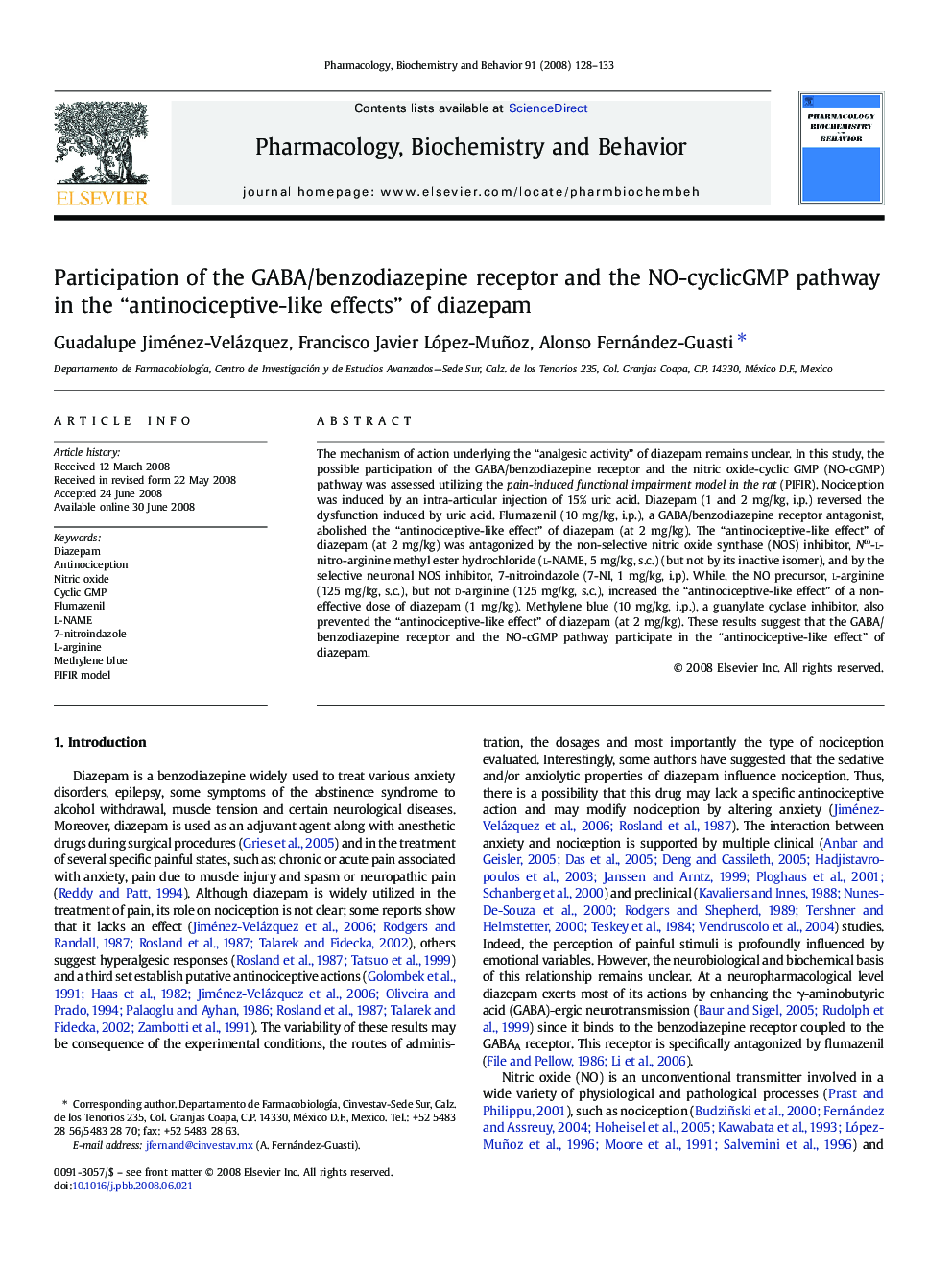| Article ID | Journal | Published Year | Pages | File Type |
|---|---|---|---|---|
| 2014289 | Pharmacology Biochemistry and Behavior | 2008 | 6 Pages |
Abstract
The mechanism of action underlying the “analgesic activity” of diazepam remains unclear. In this study, the possible participation of the GABA/benzodiazepine receptor and the nitric oxide-cyclic GMP (NO-cGMP) pathway was assessed utilizing the pain-induced functional impairment model in the rat (PIFIR). Nociception was induced by an intra-articular injection of 15% uric acid. Diazepam (1 and 2Â mg/kg, i.p.) reversed the dysfunction induced by uric acid. Flumazenil (10Â mg/kg, i.p.), a GABA/benzodiazepine receptor antagonist, abolished the “antinociceptive-like effect” of diazepam (at 2Â mg/kg). The “antinociceptive-like effect” of diazepam (at 2Â mg/kg) was antagonized by the non-selective nitric oxide synthase (NOS) inhibitor, NÏ-l-nitro-arginine methyl ester hydrochloride (l-NAME, 5Â mg/kg, s.c.) (but not by its inactive isomer), and by the selective neuronal NOS inhibitor, 7-nitroindazole (7-NI, 1Â mg/kg, i.p). While, the NO precursor, l-arginine (125Â mg/kg, s.c.), but not d-arginine (125Â mg/kg, s.c.), increased the “antinociceptive-like effect” of a non-effective dose of diazepam (1Â mg/kg). Methylene blue (10Â mg/kg, i.p.), a guanylate cyclase inhibitor, also prevented the “antinociceptive-like effect” of diazepam (at 2Â mg/kg). These results suggest that the GABA/benzodiazepine receptor and the NO-cGMP pathway participate in the “antinociceptive-like effect” of diazepam.
Keywords
Related Topics
Life Sciences
Biochemistry, Genetics and Molecular Biology
Biochemistry
Authors
Guadalupe Jiménez-Velázquez, Francisco Javier López-Muñoz, Alonso Fernández-Guasti,
